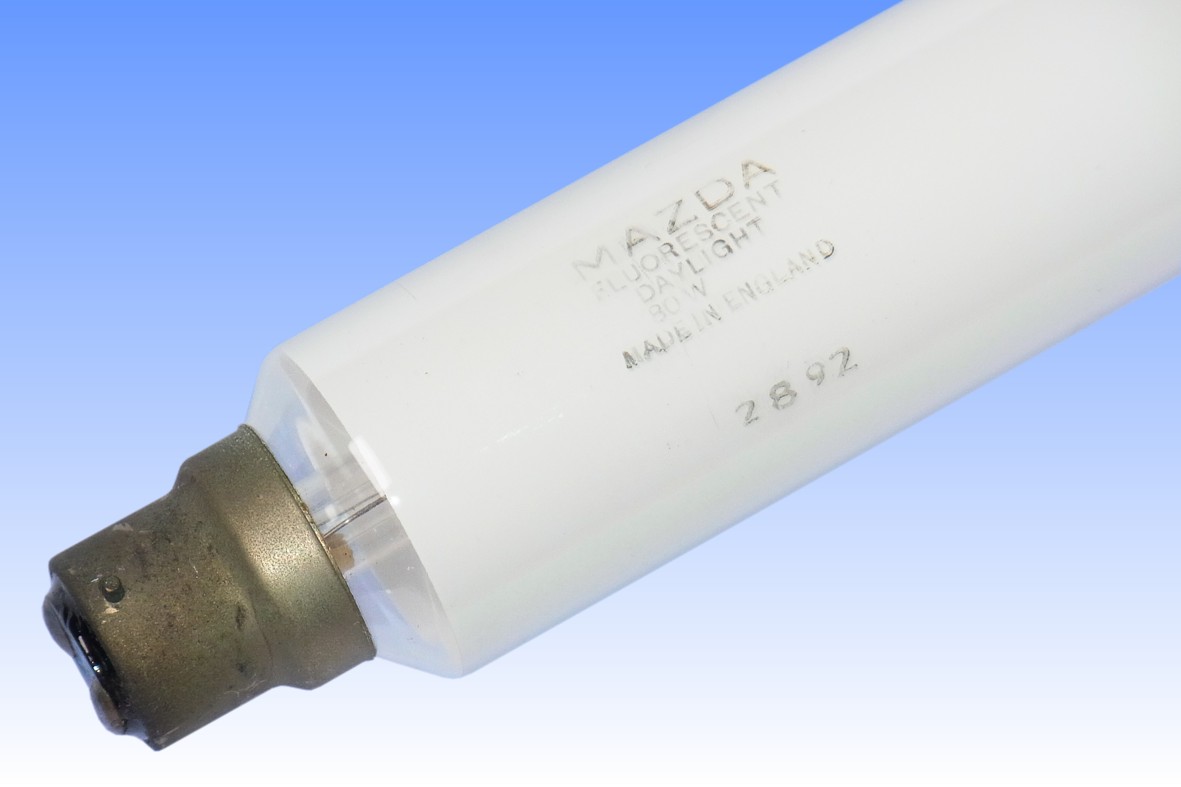
|
Mazda Bayonet Capped Halophosphate Fluorescent |

In 1942 Osram-GEC of England made the most important development in the history of the fluorescent lamp since its invention, with the discovery of the calcium halophosphate range of phosphors, activated with antimony and manganese. By adjusting the Sb:Mn ratio the colour could be tuned from a broad blue to broad orange emission, with several shades of white in between.
The original halophosphate materials delivered approximately 30% more light than their silicate predecessors, along with the achievement of a higher quality white light that was closer to the blackbody locus. Another advantage was the possibility to achieve white light from a single phosphor, avoiding the batch variations from blending the earlier mixtures. Still another advantage was the dramatically lower production cost of the halophoshates. But perhaps most important of all was their safety. Following a number of deaths at America fluorescent lamp plants, it was established beyond all doubt in 1947 that the beryllium phosphors were fatally toxic to some individuals, and their use was outlawed. GEC placed its first halophosphate lamps on the market in 1946, copied quickly by its British competitors - and following the revelations of the toxicity of beryllium, the entire world's fluorescent business swiftly adopted the GEC halophosphate materials.



| Manufacturer: | The British Thomson-Houston Co. Ltd. | |
| Lamp Power: | 80 Watts | |
| Lamp Current: | 0.87 Amps | |
| Lamp Voltage: | 100 Volts | |
| Cap Type: | B22d/25x26 | Brass + Vitrite |
| Bulb Type: | T-38 | T-12 in eighths/inch |
| Bulb Finish: | Daylight | 3Ca3(PO4)2.Ca(F,Cl)2:Sb,Mn |
| Electrodes: | Coiled-Coil + Anode Plates | Triple Carbonate emitter |
| Discharge Length: | ||
| Atmosphere: | Hg | Ar | |
| Luminous Flux: | 3,600 (@ 100h) | |
| Luminous Efficacy: | 45 lm/W (@ 100h) | |
| Colour Temperature & CRI: | CCT: ~4000K | CRI: ~Ra 50 |
| Chromaticity Co-ordinates: | CCx: | CCy: |
| Rated Lifetime: | ||
| Warm-up & Re-strike Time: | 1 minute | Instant |
| Burning Position: | Universal | |
| Nominal Length: | 1524 mm | 60 inches |
| Factory: | Leicester | England |
| Date of Manufacture: | August 1949 | Date Code: 2892 |
| Original Value: | £0 15s 0d (1950) | |
